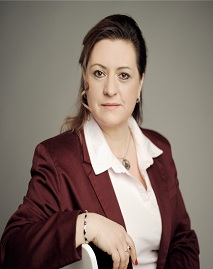
Amalia Kerl-Skurka
Rheumapraxis Altstetten, Switzerland
Title: Insight into the pathogenesis of autologous platelet plasma (APP)
Biography
Biography: Amalia Kerl-Skurka
Abstract
Insight into the pathogenesis of autologous platelet plasma (APP). The regenerative and therapeutic benefits as a treatment of acute injuries, tendinopathy and fasciopathy, pain and osteoarthitis as well as chronic inflammations (acne, psoriasis).
Introduction:
The therapeutic effect of autologous platelet plasma (APP) as a natural stimulation of tissue regeneration processes is based on the principle of oxygenation. The inflamed chronic tissues are characterized by a deficient angiogenesis process caused by an excessive production of angiogenesis inhibitors or by an insufficient production of blood vessel growth factors.
The stimulus of angiogenesis in physiological or pathological states is the deficiency of oxygen (hypoxia or ischemia), the activator of angiogenesis transcription factors — hypoxia induced factor-1 (HIF-1), — induces the expression of many angiogenic
factors, and the main regulator of angiogenesis — the vascular endothelial growth factor (VEGF) and its receptors. VEGF selectively stimulates proliferation and migration of endothelial cells, increases vessel permeability by helping the leakage of plasma proteins into the perivascular space which is necessary for the migration of endothelial cells induces the expression of endothelial NO-synthase and the formation of NO which enhances vasodilatation and stimulates the expression of proteases that destroy the connection between the endothelial cells and the extracellular matrix — a process necessary for the cell migration.
Fibroblast growth factor (FGF) stimulates proliferation and differentiation of the stromal cells of mesodermal origin of fibroblasts, osteoblasts, chondroblasts, myeloblasts, endothelial cells. The administration of autologous platelet plasma with high concentration of platelets in a given zone produces a concentration of platelets which is several hundred times bigger than it is natural in cases of injury and inflammation. The stimulation of chemotaxis and proliferation and differentiation of the cells in the tissues, and, therefore, the initiation of regeneration processes.
The using of autologous platelet plasma (APP) for rehabilitation of musculoskeletal system has proved extremely positive. The effect of the autologous platelet plasma is significant and reduce the dosage of non-steroidal anti-inflammatory drugs, is an effective substitute of longterm glucocorticoids and hyaluronic acid therefore the therapy of arthrosis allows to avoid endoprosthesis replacement. The rehabilitation of muscles, ligaments and bone tissue after traumas progresses much more rapidly (up to 30% faster) when complemented by APP treatment.
The indications are Osteoarthritis (the most oft them are knee, shoulder, elbow, and also the other joints); Osteoarthrosis (OA); Periarthritis; Tendon irritation (eg tennis elbow, golfer's elbow, achilles tendon irritation, patellar tendinopathy); Partial rupture or rupture of ligaments and tendons (Achilles tendon tear, ankle ligament tear, cruciate ligament tear, internal ligament tear, rotator cuff rupture, etc.) and muscle injuries; many tender points in paravertebral back or tension headache.
Evaluation of effectiveness of treatment for autologous platelet plasma (APP) with and without patients with osteoarthrosis; parameters "Pain”, “Stiffness”, “Functional limitation", normalized WOMAC index scores, timed 20 meter walk test before and after
Degenerative arthritis disease (gonathritis and coxarthritis) and the intervertebral spinal cord symptomatology are one oft the major hearth problem for the patients in the working age (30-60 years). Every third working person (between 30-60 years) suffers from joint diseases.
The autologous platelet plasma (APP) with or without ozone therapie can reduce the time of convelescense, allowing patients quick recovery and restart their work. The comfort ist better also post therapeutic in this form of therapie




